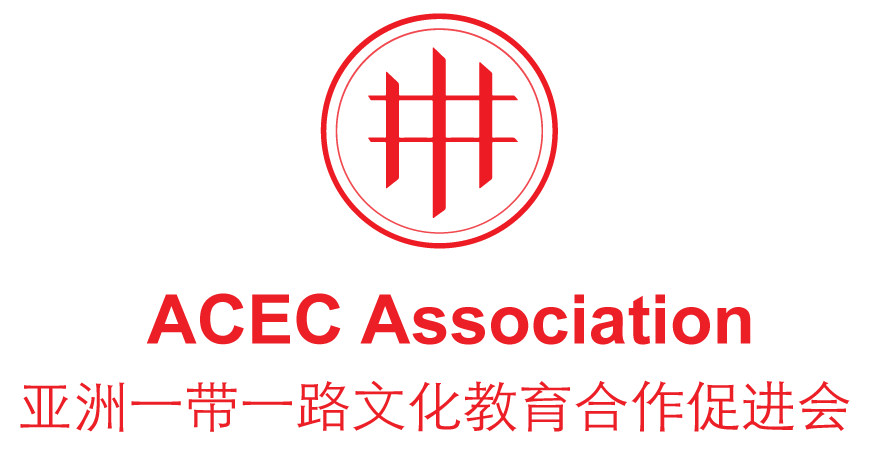Saturday July 31, 2021
News Info
The 18th China-ASEAN Expo
Background
On 8 October 2003, Chinese Premier Wen Jiabao took the initiative at the 7th China-ASEAN (10+1) Leaders' Meeting to hold the China-ASEAN Expo in Nanning, China every year from 2004 onwards, in conjunction with the China-ASEAN Business and Investment Summit. This initiative was generally welcomed by the leaders of the 10 ASEAN countries.
Development
In November 2002, at the 6th China-ASEAN "10+1" Leaders' Meeting in Phnom Penh, Cambodia, the leaders of China and ASEAN signed the Framework Agreement on Comprehensive Economic Cooperation between China and ASEAN, jointly launching the process of building the China-ASEAN Free Trade Area.
According to the Framework Agreement, on 1 January 2004, the Early Harvest Programme, the first phase of the China-ASEAN Free Trade Area, began to be implemented.
In November 2004, China and ASEAN signed the Agreement on Trade in Goods and the Agreement on Dispute Settlement Mechanism, marking the start of the full implementation phase of the China-ASEAN FTA.
In July 2005, the Agreement on Trade in Goods was implemented and China and ASEAN began to reduce tax on 7,000 items to each other. Since 2007, a second phase of tax reductions has been carried out. China has reduced tax on 5,375 products and the average tax to ASEAN has dropped from 8.1% to 5.8%. ASEAN countries have also reduced their average tax to China to varying degrees. By 2010, tax on the vast majority of products between China and the old ASEAN member countries will be reduced to zero and the free trade area will be officially completed. China and the four new ASEAN members (Cambodia, Laos, Myanmar and Vietnam) will then reduce tax to zero for the vast majority of products from both sides by 2015.
The implementation of the FTA's Trade in Services Agreement in July 2007 marked a crucial step forward in the construction of the China-ASEAN FTA, laying a more solid foundation for the full completion of the FTA as scheduled. China and ASEAN are conducting FTA investment negotiations and are expected to make new progress.
When completed in 2010, the China-ASEAN Free Trade Area will have a population of 1.9 billion, a GDP of nearly US$6 trillion and total trade of US$4.5 trillion. The China-ASEAN Free Trade Area is the largest free trade area formed by developing countries.
Since the launch of the China-ASEAN Free Trade Area, bilateral trade between China and ASEAN has grown rapidly. In 2004, China-ASEAN trade reached US$105.9 billion, achieving the goal of exceeding US$100 billion a year ahead of schedule. 2005 and 2006 saw a net increase in bilateral trade of nearly US$30 billion each year. In 2007, bilateral trade reached US$202.55 billion, an increase of 25.9% over the previous year, achieving the target of exceeding US$200 billion three years ahead of schedule. 2008, bilateral trade reached US$231.12 billion, an increase of 13.9% year-on-year.
The China-ASEAN Expo is backed by the China-ASEAN Free Trade Area (FTA). The results of the FTA construction provide an inherent market impetus for the fair's continued development. At the same time, the fair provides a rare and good platform for enterprises to share the fruits of the FTA construction and further develop their markets.
Target
With the aim of promoting the construction of the China-ASEAN Free Trade Area and sharing opportunities for cooperation and development, the fair is based on the principle of two-way mutual benefit under the Framework Agreement on Comprehensive Economic Cooperation between China and ASEAN, focusing on economic and trade cooperation within the Free Trade Area and opening up to the world, providing new opportunities for businesses from all countries to develop together.
Contents
Commodity trade, investment cooperation, service trade, high-level forum, cultural exchange
Features
1. Combining import and export, featuring import, emphasising opening up to the ASEAN market and acting as a bridge for ASEAN goods to enter China.
2. Combination of investment and capital attraction, featuring Chinese enterprises "going out" and serving as a platform for Chinese enterprises to invest in ASEAN.
3. Combine commodity trade with service trade, taking tourism services and the transfer of technological innovation achievements of small and medium-sized enterprises as entry points to cultivate new growth points for economic and trade cooperation between China and ASEAN.
4. The combination of exhibitions will complement each other. The China-ASEAN Business and Investment Summit and the Expo were held at the same time, and the two were organically combined to promote each other. During the two meetings, there will be practical economic and trade activities, as well as mutual dialogue and exchanges between the government, enterprises, experts and scholars.
5. Economic and trade event and diplomatic stage. The Expo is both an economic and trade event and a multilateral international event, enhancing understanding, fully reflecting the purpose and intention of good neighbourliness between China and ASEAN and building a strategic partnership for peace and prosperity, and pragmatically promoting the in-depth development of regional economic cooperation between China and ASEAN countries.
6. Combination of economic and trade activities and cultural exchanges. During the fair, the "Style of Southeast Asia" evening party, the opening party of the "Nanning International Folk Song Festival", the "Love of China" evening party, the golf tournament, the "Friends of Tennis" celebrity tournament, the fashion festival, the food festival and other colourful cultural and sports activities were interspersed.

第18届中国—东盟博览会
背景
2003年10月8日,中国国务院总理温家宝在第七次中国与东盟(10+1)领导人会议上倡议,从2004年起每年在中国南宁举办中国—东盟博览会,同期举办中国—东盟商务与投资峰会。这一倡议得到了东盟10国领导人的普遍欢迎。
发展
2002年11月,在柬埔寨金边召开的第六次中国—东盟"10+1"领导人会议上,中国与东盟领导人签署了《中国与东盟全面经济合作框架协定》,共同启动了中国—东盟自由贸易区的建设进程。
根据《框架协议》,2004年1月1日,中国—东盟自由贸易区的先期成果"早期收获计划"开始实施。
2004年11月,中国和东盟签署了《货物贸易协议》和《争端解决机制协议》,标志着中国—东盟自贸区建设进入了全面启动的实施阶段。
2005年7月,《货物贸易协议》实施,中国与东盟对7000种商品互相开始降税。自2007年起,又进行了第二阶段降税。中国降低了5375种产品的关税,对东盟的平均关税由8.1%下降为5.8%。东盟各国对中国的平均关税也有不同程度的降低。到2010年,中国和东盟老成员国的绝大多数产品关税将降为零,自由贸易区正式建成。中国与东盟四个新成员国(柬埔寨、老挝、缅甸、越南)则在2015年将双方绝大多数产品的关税降为零。
2007年7月,自贸区《服务贸易协议》实施,标志着中国—东盟自贸区的建设向前迈出了关键的一步,为如期全面建成自贸区奠定了更为坚实的基础。中国和东盟正在进行自由贸易区投资谈判,有望取得新进展。
2010年中国—东盟自由贸易区建成后,将拥有19亿人口、接近6万亿美元GDP、4.5万亿美元贸易总额。中国—东盟自由贸易区是发展中国家组成的最大的自由贸易区。
中国—东盟自由贸易区建设启动以来,中国与东盟的双边贸易额增长迅速。2004年,中国—东盟贸易额达到1059亿美元,提前一年实现了突破1000亿美元的目标。2005年、2006年双边贸易额每年净增近300亿美元。2007年达到2025.5亿美元,比上年增长25.9%,提前三年实现了突破2000亿美元的目标。2008年,双边贸易额达2311.2亿美元,同比增长13.9%。
中国—东盟博览会以中国—东盟自贸区为依托。自贸区建设的成果为博览会持续发展提供了内在的市场动力。同时,博览会为企业分享自贸区建设成果,进一步开拓市场,提供了难得的好平台。
定位
以促进中国—东盟自由贸易区建设,共享合作与发展机遇为宗旨,围绕《中国与东盟全面经济合作框架协议》以双向互利为原则,以自由贸易区内的经贸合作为重点,面向全球开放,为各国商家共同发展提供新的机遇。
内容
商品贸易、投资合作、服务贸易、高层论坛、文化交流
特色
1、进口与出口相结合,以进口为特色,强调对东盟市场开放,做东盟商品进入中国的桥梁。
2、投资与引资相结合,以中国企业"走出去"为特色,做中国企业投资东盟的平台。
3、商品贸易与服务贸易相结合,以旅游服务和中小企业技术创新成果转让为切入点,培育中国与东盟经贸合作的新增长点。
4、展会结合,相得益彰。中国—东盟商务与投资峰会和博览会同期举办,二者有机结合,相互促进。"两会"期间,既有实实在在的经贸活动,又有政府、企业、专家学者的相互对话与交流。
5、经贸盛会与外交舞台。博览会既是一次经贸盛会,又是一次多边国际活动,增进了了解,充分体现了中国与东盟睦邻友好、建立面向和平与繁荣的战略合作伙伴关系的宗旨和意图,务实地推动了中国与东盟国家区域经济合作的深入发展。
6、经贸活动与文化交流相结合。博览会期间同时举办"风情东南亚"晚会、"南宁国际民歌艺术节"开幕晚会、"中华情"晚会、高尔夫名人赛、"网球之友"名人赛、时装节、美食节等,五彩纷呈的文化体育活动穿插其间。

(转自中国-东盟博览会官网)
 Study Go China
Study Go China Global Study Center
Global Study Center
